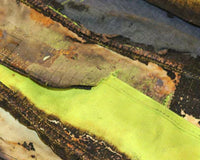Maximizing Protection with Arc Flash PPE Layering
Layering Arc Flash garments is an effective way to enhance protection, performance, and comfort for the wearer. By combining multiple layers of PPE, the total Arc Thermal Protective Value (ATPV) can exceed the sum of the individual garments, offering a significantly higher level of protection.
Interestingly, lightweight layered systems often outperform traditional, heavier solutions. This approach also allows for quick adjustments based on the required level of protection. However, it’s important to note that when layering Arc Flash PPE, 2 + 2 doesn’t always equal 4. The trapped air between layers acts as an insulator, further boosting protection beyond simple arithmetic calculations.
What to Wear Under Arc Flash PPE?
The clothing worn beneath Arc Flash PPE is just as critical as the outer protective layers. While the outer garments play a key role in shielding against an Arc Flash, they alone are not sufficient. To ensure complete protection, flame-resistant base layers must always be worn.
A proper layering system should include:
✔ Flame-resistant shirts and trousers
✔ Flame-resistant base layers and underwear
✖ No synthetic or melting fibers (e.g., polyester, football shirts, or other non-FR alternatives)
Flame-resistant undergarments are crucial, even though outer layers prevent direct exposure to flames. Wearing inappropriate materials underneath, such as synthetic fabrics that melt under extreme heat, can lead to severe burn injuries.
Choosing the Right Materials
For optimal safety, only non-melting, flame-resistant fibers should be worn underneath Arc Flash PPE. Synthetic materials can compromise protection, increasing the risk of injury in an Arc Flash event.
By following these best practices, workers can maximize their safety while benefiting from enhanced comfort and flexibility in high-risk electrical environments.
For more information on layering or creating your own layering approach, contact us at sales@skanwear.com and one of our technical specialists will be in touch.



